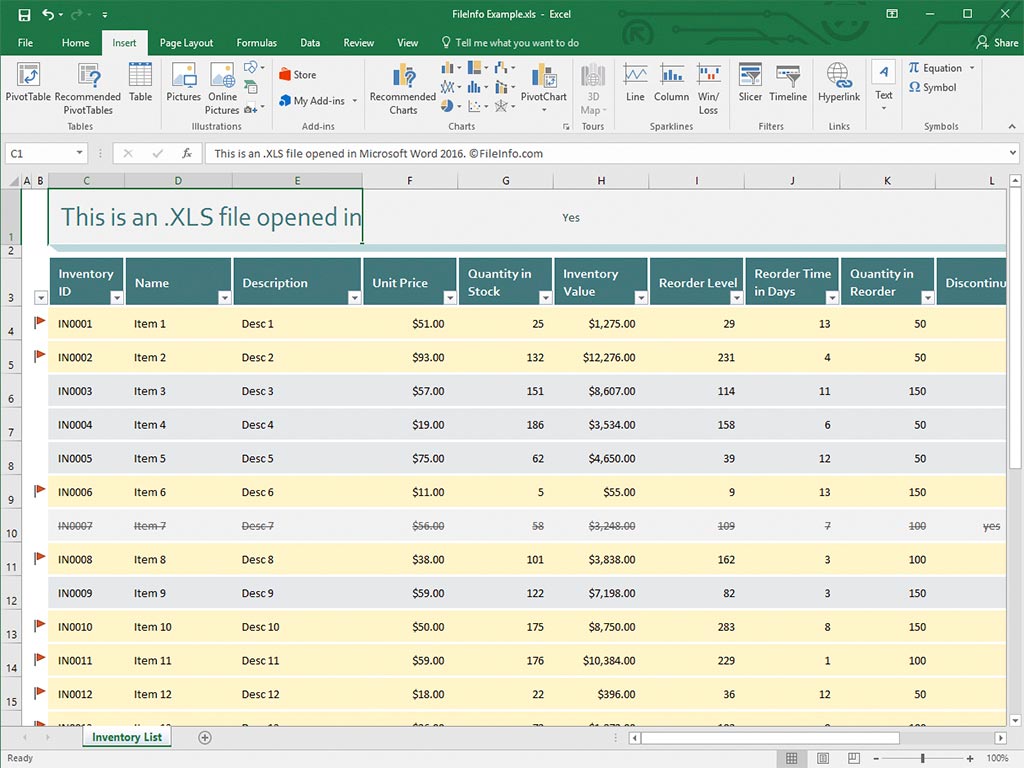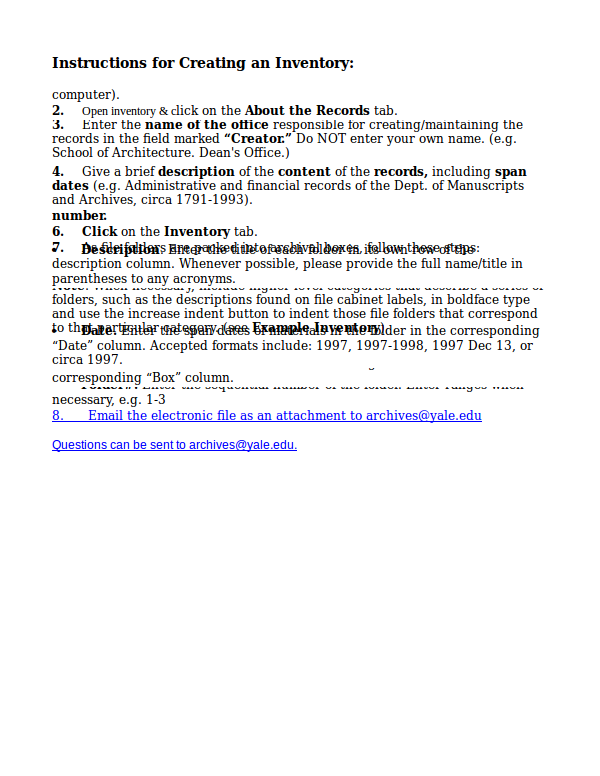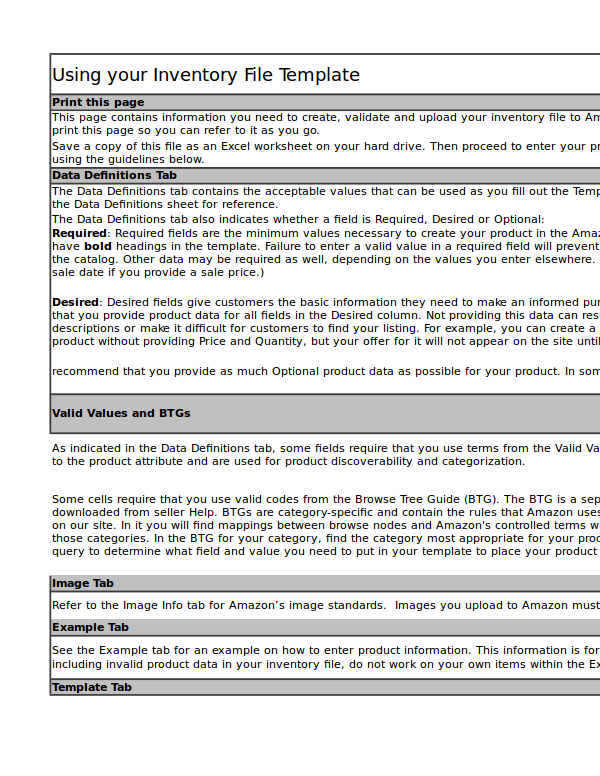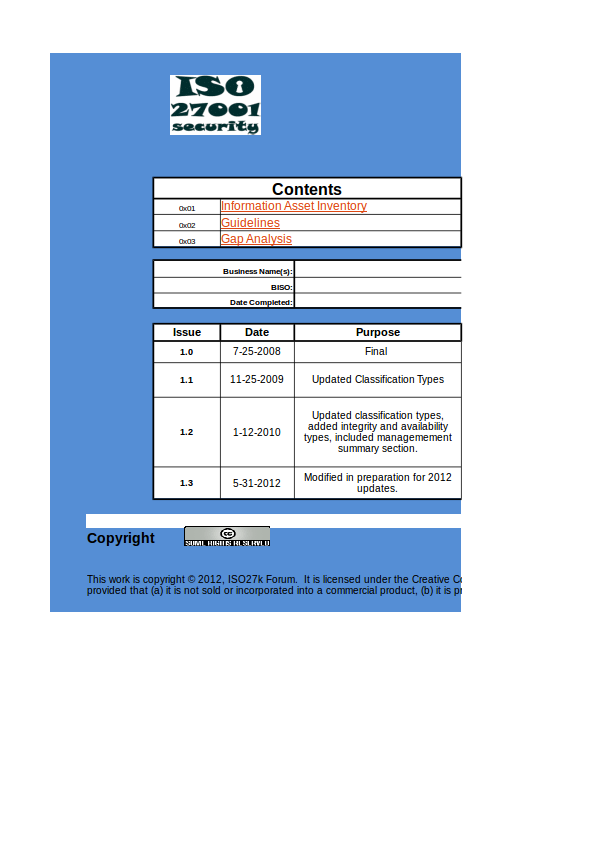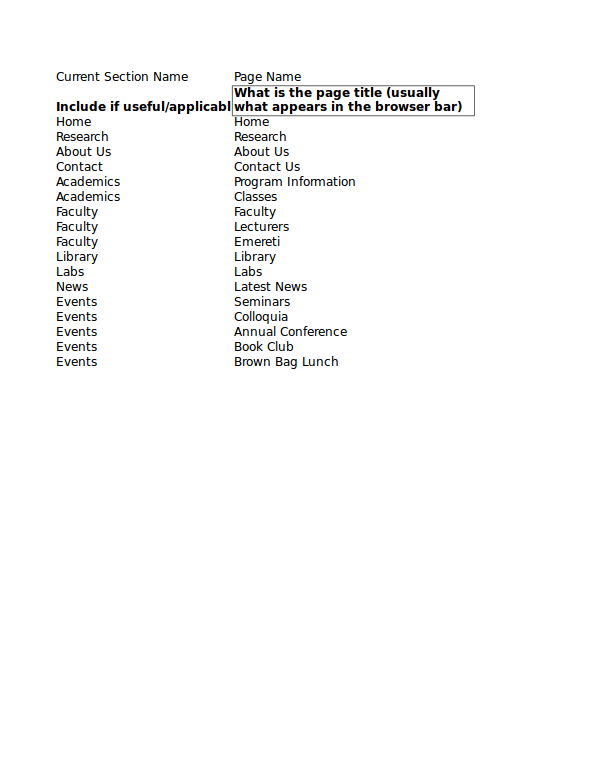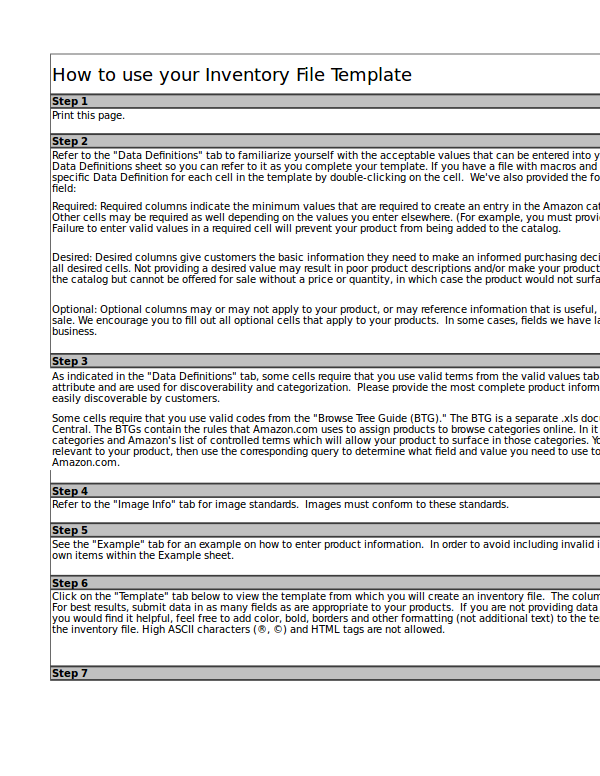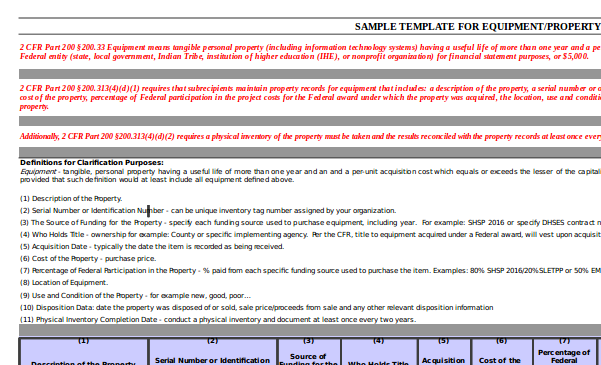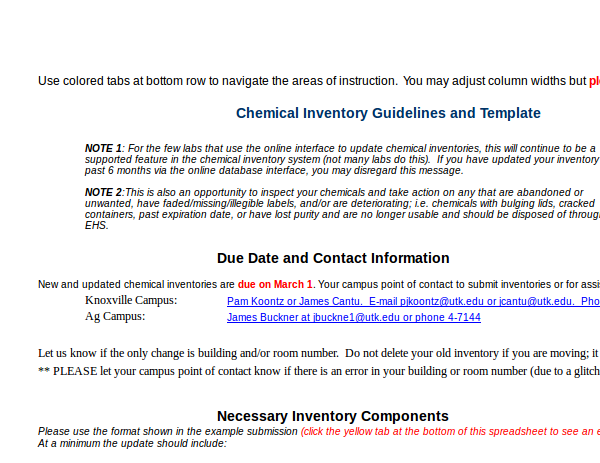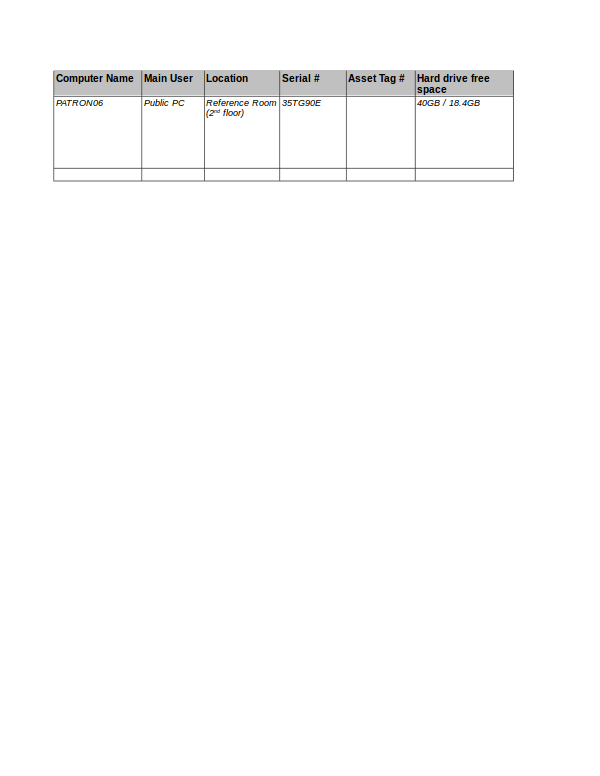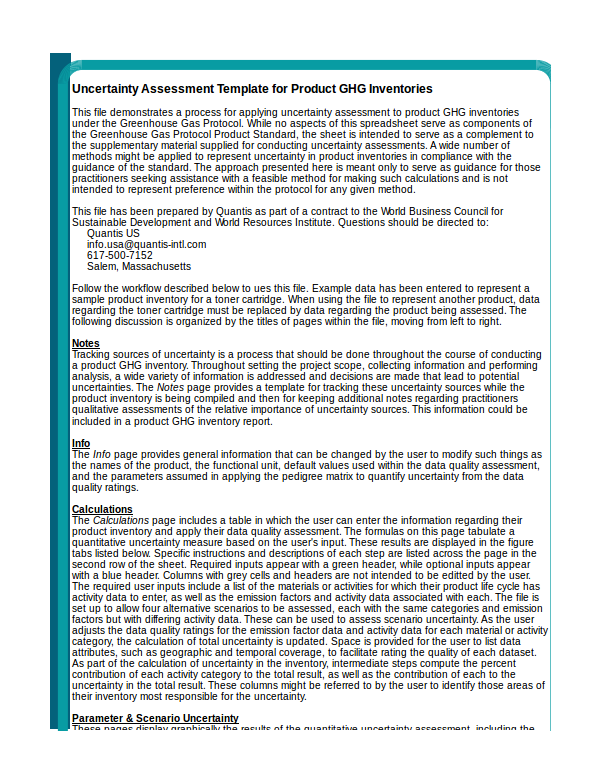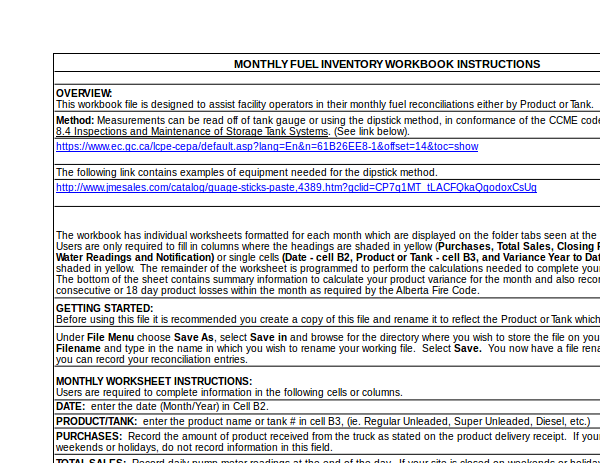18+ Inventory Spreadsheet Examples to Download
The practice of buying and selling already existed even in the old days. It is not a surprise if these people already made use of inventory. There was no computer then at that time, and there was no barcoding system. But the idea of inventorying goods at hand (items to be sold) and merchandise (sold items) has already been there. You may also see application inventory examples.
18+ Inventory Spreadsheet Examples
Inventory Spreadsheet Example
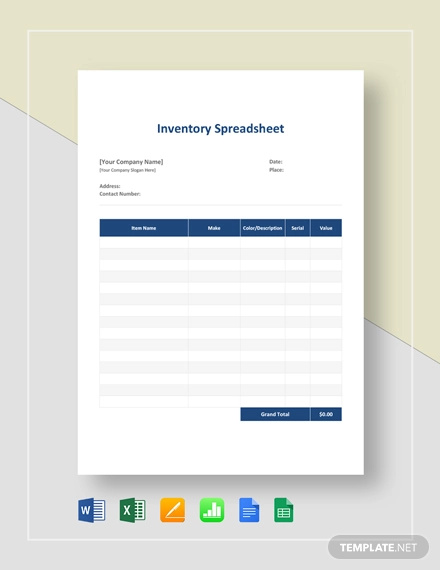
Full Service Restaurant Inventory Spreadsheet
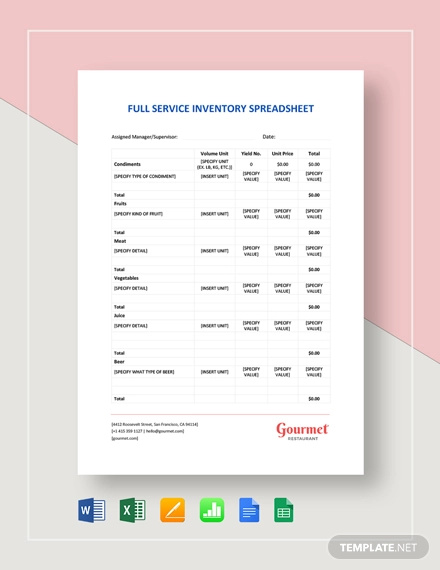
Inventory Spreadsheet Template

Blank Inventory Spreadsheet Template

Sample Inventory Spreadsheet Template

What Is an Inventory?
Inventory is a system of organizing the stock goods on hand whether for sale or for keeping purposes. It is a process by which a company manages the things in a specific location as well as its satellite branches according to the planned course as designed by the company. You may also see inventory examples in Excel.
Etymology
The word inventory comes from Middle English inventorie, and from Old French inventoire, and new French inventaire, as well as from Late Latin inventarium. The variations of the term is very minimal. And it has a common root in it which is invent(or). Invent or invention has something to do with create or creation. But we may not need to go further so as to make a comparison between the two. You may also see inventory list examples.
Purpose of Inventory
The very purpose of inventory is to make sure that everything (from stock, goods, things, materials which may be classified into four types) is managed, organized, and well preserved for the benefit of the business. The main goal is for the company to know which products, materials are available and which are not. You may also see classroom inventory examples.
Equipment Inventory Spreadsheet Template

Food Inventory Spreadsheet Template
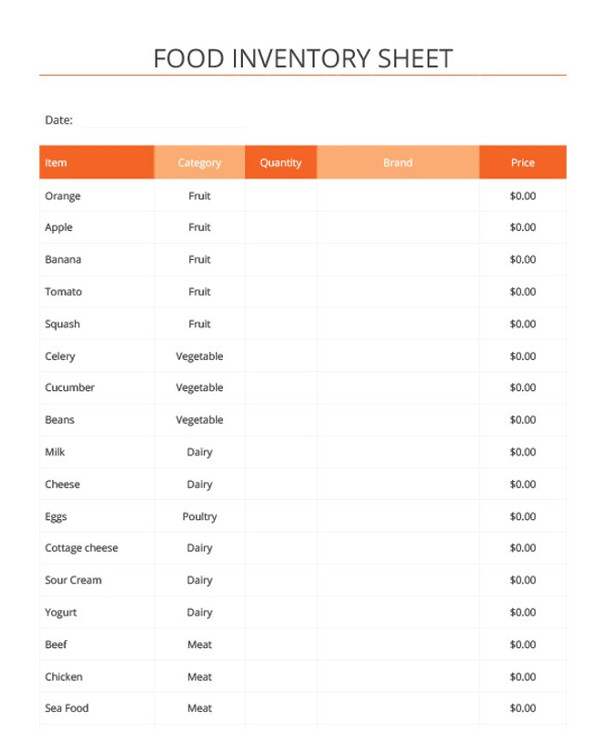
IT Inventory Spreadsheet Template
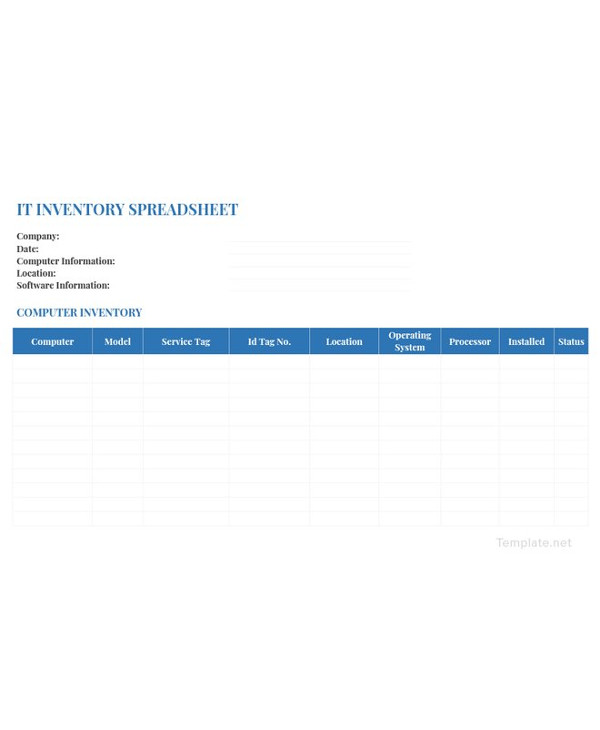
Yale Instructions for Creating Inventory Example
Types of Inventory
1. Raw Material
Raw materials are the goods or ingredients that you may use to make finish products. For example, if you are selling furniture, the woods that you use to make them are the raw materials. These are raw but still are part of the inventory, but they may not be part of goods to be sold to the customers. You may also see food inventory examples.
2. Work in Process
These are products that may look like finished products, but they still need some finishing, buffering, shining to be sold and be delivered to the customers. So in the example we mentioned earlier, these are the furniture that are completely built out of the raw materials but need some polishing. You may also see estate inventory examples.
3. Finished Goods
Finished goods are a completed form of WIP or works in process or progress. They are already polished and are ready to be sold to the public. So using the same example, they are the furniture displayed at the shop but are not yet sold. When they are sold, they will be considered as merchandise. You may also see inventory asset examples.
4. MRO Goods
MRO or maintenance, repair, operating supply are the goods that are in the office company shop, but they may not be part in the selling inventory. These goods are the
- consumables such as milk, soap, ink, ribbon, paper;
- industrial equipment such as wires, transformers, generators;
- plant supplies such as lubricants, repair tools; and
- furniture, windows, electric fan, air conditioner.
Classification of the goods and merchandise in an inventory varies from one company to another. A small operating company may not have to make a classifications, but basically, these four types of inventory are the most common. You may also see moving inventory examples.
Inventory File Template Example
Asset Inventory Example
Content Inventory and Planning Example
Primary Responsibility of an Inventory Managers
Inventory managers may not be very common in many companies. Nevertheless, you still do have the task of inventory. And while companies assign this job to an accountant, a secretary, or a bookkeeper, it is best that there should be a manager to do the said task. Here are some of the most important jobs for inventory managers. You may also see store inventory examples.
1. Tracking of Inventory. Well, this is what inventory mangers are verily known for—to track items. And this even makes up what inventory job means. This is generally the basic concept of inventory. Part of the tracking task is to make classification of the items. That way, it would be easier for the company to know which one is which, which is missing, which needs a follow-up. You may also see job sheets.
As mentioned earlier, the common type of classifying inventory is raw materials, work in progress or process (WIP), finished products, and MRO goods (maintenance, repair, operating supply). Classifying inventory will make it easier for everyone to identify problems. You may also see inventory examples in PDF.
2. Study Suppliers. Evaluating suppliers is an important task or job in a company, hence the need for an inventory manager. An inventory manager has the responsibility of studying and investigating from which suppliers their company must get their products. Inventory managers should also see to it that the relationship of the suppliers and the company is well maintained, and occasionally checking if there is a delay of delivery of raw materials, making sure that the items that come into the warehouse are of the highest quality. Inventory managers do all these while at the same time always looking for some other possible contract with other suppliers who offer better deals, such as cheaper price. You may also see equipment inventory examples.
3. Documentation. Inventory is all about documentation. It is not inventory if it is just about knowing goods. Rather, it should be about making a documentation, a list, or a write-up of the materials that needed to be listed as part of the inventory. The recording should be about the quality, the quantity, the type, the style, or any characteristic that can make up the whole inventory easily accessible not just to the managers or inventory personnel, but to the common employees for future use. You may also see student inventory examples.
The documentation is not actually only for the inventory managers’ use but for everyone to make reference to for sales purposes, for the advancement of the company’s business, for improving market strategy. So the inventory manager makes the inventory, but he is actually supplying a critical information for the whole team in the company.
4. Acquire New Inventory. Sometimes, the real purpose of the job of the inventory manager is to buy, buy, and buy products. But this is buying with the use of the brain. This is about scouting which products are sold cheaper and keeping as many of them in stock. So the manager is the first one to know which ones are sold at a high price and which ones are sold cheap. The manager then provides information to the marketing team that these products are increasing in price while these are not. You may also see sheet examples.
So inventory managers are not just about documenting items, they are also part of the sales, the business, the marketing in actuality. Of course, they do control the buying, making sure if it is too much or not, making adjustments. But they are very fundamental in boosting the marketing strategies of the company.
Sports Memorabilia Template Example
Home Inventory Example
Sample Template for Equipment Inventory Example
Reasons Why You Need an Inventory
1. Tracking Inventory
Having a documentation in your business by way of inventory means you can easily track the whereabouts of all your items. This implies that you can make priorities instead of constantly looking for something else. You may also see system inventory examples.
2. Control Your Costs
Because you can see the status of your items, materials, as well as its cost, managing your financial expenses is easier.
3. Improve Your Delivery
If you know which ones are out of stock, then you can be efficient in your transaction instead of saying, “Let me find it for you in the warehouse.”
4. Manage Planning and Forecasting
Documenting your items means you can make estimates, and identify patterns. That makes it a big advantage because you can easily plan for the next thing. You may also see asset inventory examples.
5. Reduce the Time for Managing Inventory
Instead of managing how to inventory, you can skip the process because the system already does it for you.
Tips to an Efficient Inventory
- Holistic approach. Inventory is not just about inventory, it is also about allowing others to know what is happening in the sales, the status of the company. That said, the company can assess how much is needed to work on something. Having a data will allow the team what to maximize and what to prioritize. You may also see accounting inventory examples.
- Forecast. Always be updated. Look for other probable suppliers that offer the best option, best product for your company. That way you are using inventory not just for enlisting items but also for marketing strategies.
- Data automation. Use bar codes. This means attaching stickers to every item the moment it gets to your office or warehouse. But that’s just it, the next time you do an inventory, you will just have to scan them. And that is way faster than doing a manual input. Plus, this gives an advantage of having every item that you have with markings, and if possible, traceable using a receiver. You may also see process inventory examples.
- Centralized. If your are doing a manual inventory, which is by hand, it means there can only be one person who is able to access it. If you do it on a computer, and sync online, you are allowing other authorized users to access it, which makes the inventory even faster. The trick is to use cloud-based software instead of the old manual style. If you have no internet access, you can make a LAN (local area network) connection of your computers. You may also see property inventory examples.
- Buy cheap. You are warned not to overstock perishable products such as fruits, bread, and other kinds of food. But you may stock wood, computer parts, stones. Now that is up to you how you make with these items.
- To rot or not to rot. It is good to be able to stock plenty of products especially for the low price that you acquired of them. But make sure they will not rot. So avoid fruits and the like if that is your intention. Hardware and solid products will mostly be the best kind of products that will benefit your style of hoarding cheap products to be used for future sales. You may also see restaurant inventory examples.
- Track, be informed, and inform. The purpose of inventory is to be informed, but you do not only inform yourself. You are also informing others especially the marketing team. This information can be used to maximize sales. You may also see landlord inventory examples.
Chemical Inventory Example
Tech Inventory Example
Inventory Programs
Imagine how people would inventory items without the use of a software program or apps. Well, that is unimaginable now that we have so many programs available for download, and many of them are free. Back in the day, it was not a problem either; they just do not have the option to use a computer. But which one would you choose? The following are just a few of them. You may also see job inventory examples.
1. ABC Inventory Software
As their website claims, ABC Inventory Software “is a Windows-based application. The standard package includes the following modules: inventory control, purchasing, warehouse appointments, asset maintenance work orders, assembly orders, bill of materials, assets, shipping, inventory sales.” ABC is designed specifically toward smaller companies that don’t need all the fancy stuff that come with a bigger system such as found in Excel from Windows. You may also see skills inventory examples.
2. Stockpile
By Canvus, is a free online inventory management system for small- and medium-sized businesses. It has the ability to take returns, record sales and damaged goods, and track inventory turnover.
3. inFlow
As their website claims, inFlow is the easiest way to run and manage your item-based business. With 10 years in development, it powers thousands of small, and probably big businesses, as well, worldwide in wholesale, distribution, retail, manufacturing, and e-commerce. The free version will have no expiration which will take advantage of the small business who have no plans to go full scale. Some features include auto backup, various accounting methods, and bar coding. If you want to upgrade inFlow, it can be had for a one-time payment of 399 USD. Unlocking all the features will benefit big and serious companies because of its unlimited services and support, a well as open customization and advanced designs. You may also see school inventory examples.
4. Odoo
According to their website, Odoo is “a suite of open source business apps that cover all your company needs: CRM, eCommerce, accounting, inventory, point of sale, project management, etc.” There is a version that can be used freely for up to two people, that is the online version. The online version of Odoo is free for up to two people. Download it and you can have free access of the program for unlimited users. You may also see rental inventory examples.
5. Excel
The most heard and common program of all. This is a Windows-based program and is designed and produced by the creators of Windows itself, so the integration of this program to the OS is stable. That will benefit users from the hassle that they go through when upgrading a software and then bugs will take place.
These are just programs, but the real brain of the inventory is the person doing or making the inventory, not the programs, not the computer. But if you have your own style of doing an inventory, you can try any of these we mentioned earlier and see for yourself which one suits you. The good thing is that many of these programs are free, or at least can be used for a trial period of time. At the end of the day, all that matters is the recording and documentation of all the items in your company. You can start with any of the program and then eventually get used to its quirks and features. You may also see blank inventory examples.
But it also does matter if you are efficient in operating a software program. Which implies that if you are not that good in computer, you may want to hire someone who can do the job for you as far as mining and inputting the data.
Uncertainty Assessment Template Example
Fuel Inventory Management Example
Inventory in the 20th Century
Preparing and making an inventory with the use of spreadsheet these days is not that complicated. An inventory program will almost do all the technical things for you. There is automation, such that a program can compute numbers without you doing the computation. You can arrange and group things as fast as a bullet; it is called sorting. But the magic word is bar coding. You just scan the goods and merchandise, and voila. Everything is already entered in the database. You may also see supply inventory examples.
The advancement of technology means you can add microchips to your items, scan them with your cell phone, and can be accessed by the store owner from miles away, instantly. This was unimaginable decades and centuries ago. There was no spreadsheet then. Just stones and a carving stick. Now it is progressing fast but at the same time complicated. But that is just a development of a very old practice called inventory. You may also see inventory database examples.


